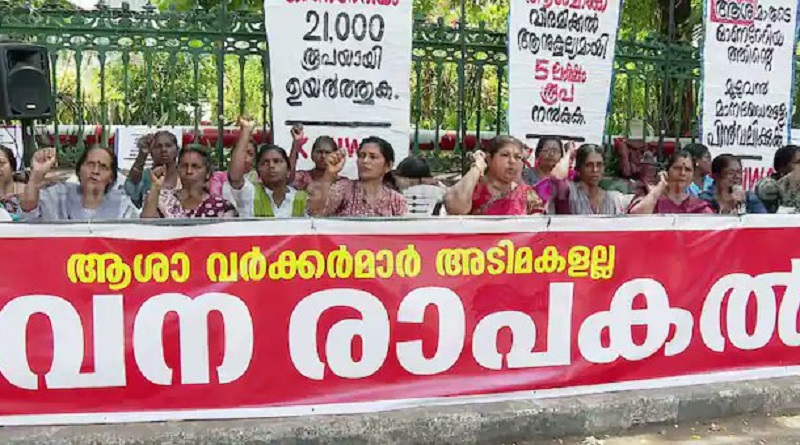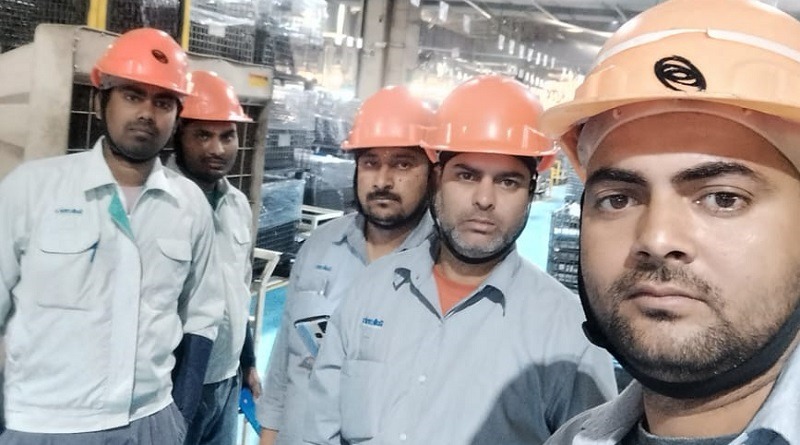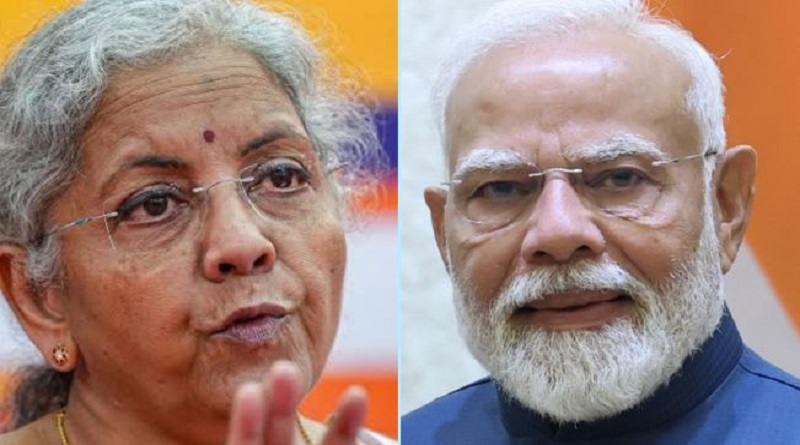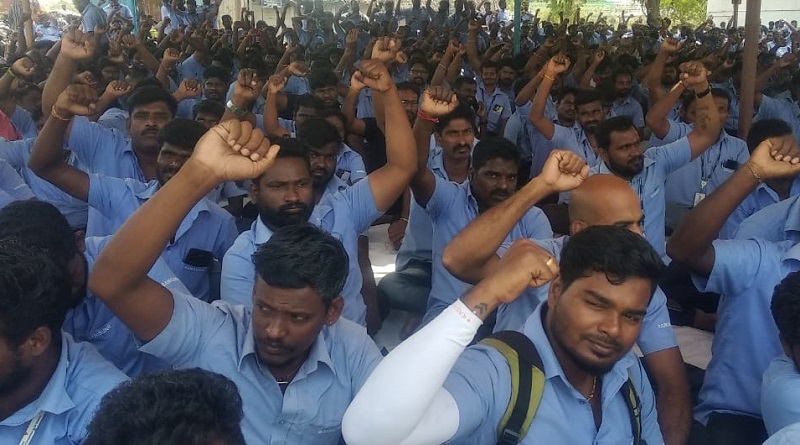‘Polyester prince’ and ‘Coal king’: comprador bourgeoisie at its zenith
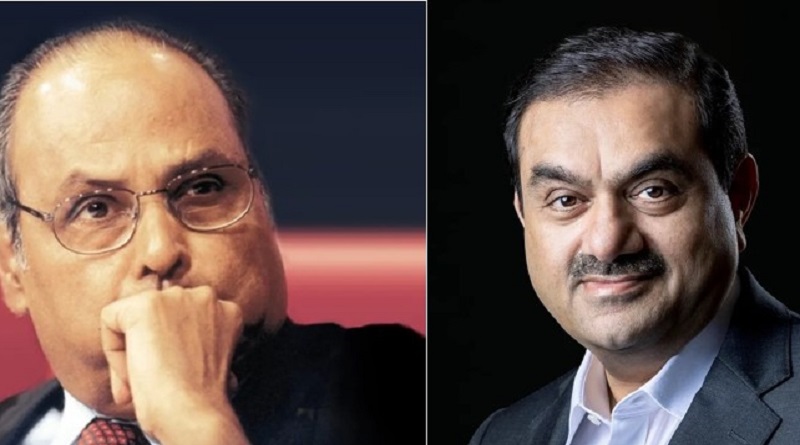
”Such is the story of a big India firm which through its faithful service to the British rulers went from ‘rags to riches’ and came to have diverse roles- the roles of indigenous bankers with close links with foreign capital, treasurers to the governments, merchants, landlords, industrialist and owner of mines.”
[”Suniti Kumar Ghosh” The Indian Big Bourgeoisie : Its Genesis, Growth and Character p-190]
The above example referring to pre-independence India is still relevant today; we only need to substitute ‘British rulers’ with ‘Indian rulers’.
One recent example will clarify it further: Washington Post has published a detailed report on December 9, 2022 about the Godda project of Gautam Adani.
The report states that the electricity generated at the ‘Godda Power Plant’ from coals imported from Australia and Jharkhand will be exported to Bangladesh. No taxes of any kind will be levied on Adani for this project.
Now the question comes, how will India benefit from this project? Ruthless displacements of the indigenous tribal people, destruction of paddies and palm grove fields, and disastrous consequences for the environment.
The report also states that Bangladesh has sufficient resources to generate electricity which has not yet been utilized to its full capacity. Therefore, Bangladesh has no need to import electricity from Gautam Adani.
Moreover, according to the report, Bangladesh can generate the necessary electricity from ‘wind energy’ at a much lower cost than it will be paying to Adani for the electricity.
Let us again focus on India. At one place, the report says that –
‘The project, however, will benefit its builder, Gautam Adani, an Indian billionaire who according to Global Energy Monitor is the largest private developer of coal power plants and coal mines in the world. When his companies’ stock peaked in September, the Bloomberg Billionaires Index ranked Adani as the second-richest person on the planet, behind Elon Musk.’
The report depicts the underground/ background story of the project as: ‘After a senior Indian official opposed supplying coal at a discount to tycoons, including Adani, he was removed from his job by the Modi administration.
When a local lawmaker led a hunger strike to protest the power station, he was jailed for six months…………On at least three occasions, according to officials and documents, the government revised laws to help Adani’s coal-related businesses and save him at least $1 billion. That came even as Modi told the United Nations he would tax coal and ramp up renewable energy.’
In this way, to benefit this power project of Adani, Raghubar Das government of Jharkhand amended 25 percent of the associated rules in favor of Adani.
As per the established rule, creation of SEZ is prohibited for only a single project; however, to provide tax relief to Adani this rule was also amended, and Adani’s project became SEZ.
According to Washington Post, this mover will save Adani around $35 million a year just on his coal imports for Godda. Coal imports are usually taxed at 400 rupees, or about $5, per ton.
The loot thru coal imports is just one way in which the Modi govt facilitated loot by Adani's companies pic.twitter.com/p8DbgwRZDZ
— Prashant Bhushan (@pbhushan1) February 11, 2023
During and after 2014 election, Modi was frequently seen to travel in the private jet of Adani, leading to the allegations of Modi favoring Adani. When the questions were raised in Parliament, former tourism minister K.J. Alphons refuted by answering – ‘Every industrialist who creates money in this country creates jobs. They have created jobs. They must be respected.’
The Irony is while Gautam Adani was earning rupee 1600 crore per day and Mukesh Ambani was earning rupee 90 crore per hour, during the same period, share of manufacturing in the country has been fall to 13 to 14 percent from 17 percent, according to the data by CMIE unemployment has crossed the 5 crore mark.
According to 2013 statistics, India had more than 6 crores MSMEs [Micro, Small & Medium Enterprises]. Since Modi’s ascend to power, demonetization, Covid-19 and other government policies have forced many of the MSMEs to shut down leading to crores of people losing jobs and thus their means of sustenance.
Government is deliberately denying disclosing this data. The empires of Adani, Ambani are built on the carcasses of these crores of MSMEs. That is, players like Adani / Ambani have moved forward by breaking the backbone of the country’s economy. It can be certainly concluded that the personal successes of Ambani-Adani has always been inversely proportional to the growth of Indian economy.
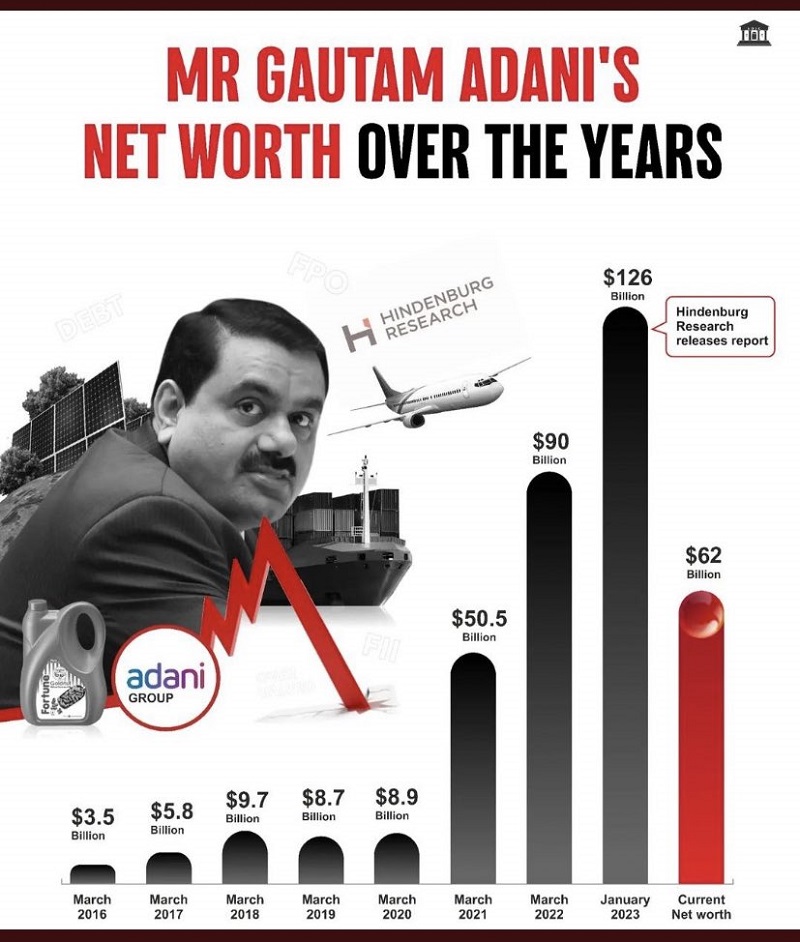
At the same time, if we compare Adani-Ambani with the capitalists of America or other European countries, we will find that the rapid increase in personal wealth of Bill Gates, Mark Zuckerberg, Elon Musk, Geoff Bezos, Steve Zaab, Larry Page, Sergey Bin has been based on the ‘global brands’ created by them.
All these brands are based on new technologies be it semi-conductors or artificial intelligence, e-commerce, proprietary software, touch-screen or electronic gadgets. The same can be said about China too, especially in the context of 5G and Huwai.
However, the governments of America or China have always played an important role in facilitating these billionaires to develop new technologies. During the Obama and Bush regime, Elon Musk [Tesla] was provided with technology from NASA. The ‘touch screen’ was invented in the government labs of USA. Internet came into being in the as a result of R&D project (Research and Development) of US military. To know this in detail, one can read ‘The Entrepreneurial State’ by ‘Mariana Mazzucato’.
But the question is, which ‘global brand’ has Adani-Ambani created? What technology is developed? How much do Adani-Ambani spend on R&D? How much does the Government of India help them in developing technology?
In India, the Government helps the billionaire capitalists by awarding them lands for free, handing over government assets such as airports, mines [more than 60% of Adani’s revenue comes from the coal trade] and sanctioning loans from public sector banks and by formulating policies that directly benefit them.
As a result, we are now more dependent on the foreign technologies and foreign capital than we were before 1947. This is the reason the major share of value generated in India actually goes to the Imperialist countries and companies through the ‘Global Value chain’ [To get a detailed account, one can read ‘Imperialism in the Twenty-First Century’ by John Smith]; and our country continues to grapple with the structures of ‘underdevelopment’, which the revolutionary left of India rightly calls the ‘semi-colonial’ structure.
Let us look into another example to understand the business model of Adani. Despite of the vehement opposition of the Kerala Government, Tiruvantpuram airport had a profit of around rupee 180 crore in 2018-2019 when it was handed over to Adani under PPP mode from ‘Airports Authority of India’ [AAI] which was already doing a very good job of managing it. Adani now has lease over eight airports and 13 seaports, all acquired in the same manner.
Interestingly during UPA 2, a parliamentary standing committee in 2013 unanimously issued serious warnings against the privatization of airports. The committee had yogi Adityanath as one of the members. [EPW-april 3, 2021]
It is important to note that Adani’s empire is built on government money. According to an estimate, Adani’s companies have a debt of about 2 lakh crores, a large part of which is from SBI and LIC.
For this reason, CreditSights has called the Adani Group ‘deeply overleveraged’ in one of its reports and expressed fears that it may go into a ‘debt trap’.
In an interview, given after the NDTV acquisition, Adani said that his debt from public sector banks is decreasing and he is now raising money by issuing bonds in the international market. According to Adani, this is about 50 percent of the total debt.
From this, we can understand how much wealth of the country is being transferred to imperialist countries and multinational companies through big capitalists like Adani-Ambani and their industries. That is, these capitalists transfer more value outside the country than they create.
Suniti Kumar Ghosh, in his book The Indian Big Bourgeoisie: Its Genesis, Growth, and Character’, has identified the process of genesis and growth of big capitalists before 1947, which continues more or less even after so many years. Gautam Adani, who roamed around Ahmedabad on a scooter, also started his journey with trading/ middleman.
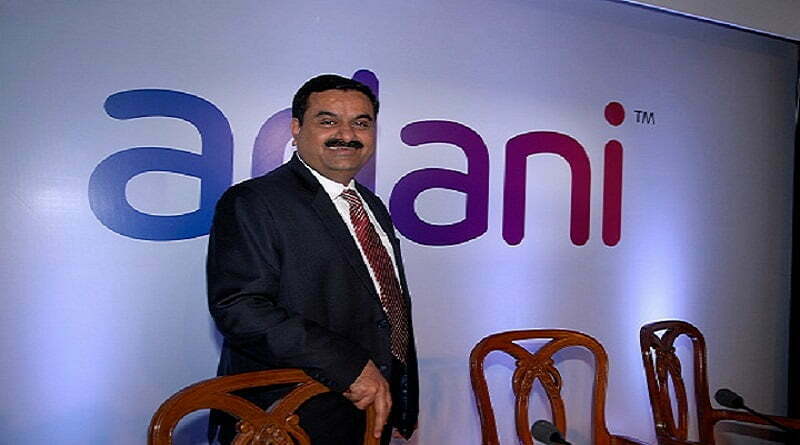
During India’s economic liberalization in 1991, apart from trading in metal, textiles, and agro products, Adani was also a middleman for the multi-national company Cargill, which was operating salt mines in Mundra, Gujrat.
When Cargill pulled out of it, in 1995, the Gujarat government handed over the operation of ‘Mundra Port’ to Adani; and from here, Adani’s journey from ‘Rags to Riches’ began with full swing.
At the time of writing this article, the Hindenburg Report has been published and millions of small investors have lost crores of rupees in the stock market.
In this report, Hindenburg has made it clear that by doing ‘financial engineering’ through its ‘shell companies’, the Adani family has artificially/ fraudulently inflated the price of its shares by about 85 percent and then raised money from the market or from banks by pledging this inflated share.
Shares of LIC and SBI have also fallen in the market due to the Hindenburg report. LIC alone has lost Rs. 16,300 crore, which is the hard earned income of the public. LIC and SBI together lost about Rs 78,118 crore.
urprisingly, despite Adani’s rapidly falling shares, LIC has invested about Rs 300 crore and SBI has invested about Rs 225 crore in Adani’s companies to save Adani.
This huge investment of Rs 525 crore in Adani’s companies could not have been done without the instructions of the government.
After the Hindenburg report, the Adani group should have been investigated, Gautam Adani should have been arrested.
On the contrary, he has been provided a lifeline of rupee 525 crores. Here one can relate to the lines by ‘Wasim Barelvi’-
“We investigate the poor waves
No one searches the seas.”
Adani has recently described Dhirubhai Ambani as his inspiration in a recent interview. Dhirubhai Ambani’s ‘rags to riches’ journey is also quite interesting. Dhirubai made several lakhs of rupees by melting Rial, the unit of money, in Yemen’s Aden city and fled back to India to avoid an ‘arrest warrant’.
Hamish McDonald, who wrote on Dhirubhai Ambani’s Genesis and Growth, has described this incident in a very interesting way in his brilliant book ‘The Polyester Prince’ [this book was banned in India]. …. “Early in the 1950s, officials in the treasury of the Arabian kingdom of Yemen noticed something funny happening to their country’s currency. The main unit of money, a solid silver coin called the Rial, was disappearing from circulation.
Inquiries found that an Indian clerk named Dhirubhai Ambani, then barely into his twenties, had an open order out in the souk (marketplace) of Aden for as many Rials as were available.
Ambani had noted that the value of the Rial’s silver content was higher than its exchange value against the British pound and other foreign currencies. So he began buying Rials, melting them down, and selling the silver ingots to bullion dealers in London.
‘The margins were small, but it was money for jam,’ Dhirubhai later reminisced. After three months it was stopped, but I made a few lakhs [one lakh = 100000 rupees] of rupees. I don’t believe in not taking opportunities.” [page-15]
After returning to India, Dhirubhai Ambani set up a textile mill; his ‘Great Polyester War’ with Nusli Wadia used to be an important headline in the newspapers of that time. Specifically, the war revolved around the imported material DMT (Dimethyl Terephthalate) TPA [Terephthalic Acid].
Due to his proximity to the government [especially Pranab Mukherjee], getting an import license and getting prior knowledge of the government’s tariff policies were easy for Dhirubhai; in this way he surpassed Nusli Wadia and brands like ‘Bombay Dying’ a long way.
In ‘Polyester Prince’, the author has given an interesting description of the marriage of Dhirubhai Ambani’s daughter. From this, one can understand the closeness of Dhirubhai Ambani to the government.
He wrote –
“Many officials in charge of customs and excise were drawn into the Reliance family, rather than adopting the attitude of arms-length enforcers. The journalist Kanti Bhatt recalls attending the marriage of Dhirubhai’s daughter Dipti in 1983, when he joined the marriage procession, which in the Hindu tradition follows the groom to the venue, with the guests occasionally breaking into the twirling dance known as Dandiya Raas. ‘I found myself in the street playing Dandiya Raas with the Finance Ministry’s chief enforcement officer,’ Bhatt said.’’ [page-46]
Well, let us fast-forwards to the empire of Dhirubhai Ambani’s two sons Mukesh and Anil. In 2014, renowned journalist and former EPW editor Paranjoy Guha Thakurta along with Subir Ghosh published a book – “Gas Wars: Crony Capitalism and the Ambanis”.
The book had to be published by Paranjoy Guha Thakurta himself as no publishing house was willing to publish it. As soon as the book came to the market, Reliance filed a rupee 100 crore defamation suit against the authors of the book.
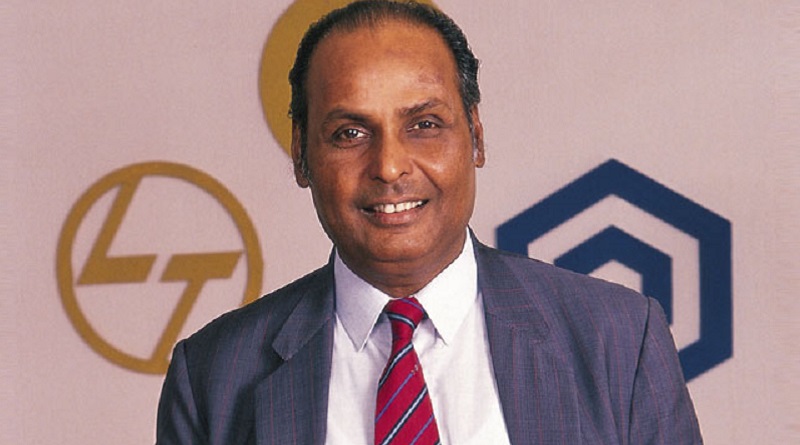
Interestingly, Reliance also filed a defamation suit against former Bengal Governor Gopal Krishna Gandhi for calling Reliance a “parallel state” in a seminar. Not surprisingly, Ambani has also filed a criminal defamation case against Paranjoy Guha Thakurta.
In this book, Paranjay Guha Thakurta explains with facts how senior ONGC officials were lured into ‘Reliance Petrochemical’ and through them confidential files of ONGC were obtained and the empire of ‘Reliance Petrochemical’ expanded by using important information of those files.
Paranjay elaborates on how Reliance got ‘gas blocks’ from the government and then sold it [i.e. gas] to the government at high prices and even hoarded gas for higher prices.
He writes –
“Reliance was hoarding its gas in the expectation that prices would be raised in the not-too-distant future. Given global prices, the company saw the government-administered price of $4.20 per mBtu as too low. At a time when Panna-Mukta gas (where RIL holds a 30 per cent stake) went at $5.73 per mBtu and imported liquefied natural gas (LNG) cost $12–14 per mBtu when it reached Indian shores, RIL clearly did not want to sell gas at $4.20 per mBtu. It would suit RIL’s purpose to reduce gas flows from the KG basin and hold on till the prices went up, for a number of reasons.’’ [page -773]
“They (meaning RIL) have deliberately reduced production from 80 mscmd to 27 mscmd in the current year and have threatened to reduce it further by 18 mscmd next year. The fallout of this is that we are losing power to an extent of 12,000 MW. Next year the shortfall will be to the order of 13,500 MW. If we could substitute this with costly imported gas, the extra subsidy burden on fertilizer and power in the current year would be Rs 40,000 crore. This figure was Rs 20,000 crore in the year 2010-11. Next year, with an anticipated shortfall of 62 mscmd, this will translate to a loss of Rs 48,000 crore. Thus the loss to the country in the three years due to shortfall in production would be a whopping Rs 1,10,000 crore.’’ [page-147]
But the most sensational disclosure was made by ONGC. On July 27, 2013, ONGC issued a press release in which it alleged that Reliance had stolen large amount of gas from its ‘block’.
On November 4, 2016, the Oil Ministry found ONGC’s allegations true and imposed a fine of $ 1.47 billion on Reliance and its partner companies (RIL-BP-Niko consortium).
But on August 1, 2018, the Indian government lost the case in the International Arbitration Tribunal [headed by Singapore-based arbitrator Lawrence Boo] and Reliance was ‘acquitted’. Experts believe that the Indian government fought this case only to lose.
RIL’s major partner BP (British Petroleum) holds about 30 percent stake in RIL. BP provides RIL with all the necessary modern technology.
Therefore, the technology is supplied by BP, the gas is extracted from the nature, the money is provided by government banks and shareholders, but the empire belongs to Reliance. This is more or less the business model of India’s monopoly capitalists. That is, their horizontal base is very narrow, no matter how high the vertical height is.
This does not apply only to Reliance or Adani, but this is the basis of India’s ‘underdevelopment’.
Chirashree Das Gupta writes in ‘State and Capital in Independent India’ –
“Imports of industrial minerals increased hugely both in relative and absolute terms. Thus the high import content of industrial output remained a problem given the lack of any substantive sovereign technology policy.” [page-99]
Here we should note that these companies also provide foreign multinational companies a base in India or work as a ‘conveyor belt’, through which the valuable wealth of this country is transferred to imperialist countries. In 2020, Facebook bought a 10 percent stake in Reliance Jio.
Everyone knows about Anil Ambani’s ‘Rafale Story’. But here I would like to mention the fraud about which only a few people know.
Anil Ambani got RCOM in the Ambani brothers’ share. In 2005, BSNL accused RCOM of illegally earning crores of rupees by converting ISD calls into local calls.
For this, BSNL imposed a fine of Rs. 9,89,68,892 / – [for illegal routing of calls] on Reliance. [https://indiankanoon.org/doc/1667693/] [https://www.business-standard.com/…/sc-asks-tdsat-to…]
It is now an open truth that the success of RCOM and then Reliance Jio has been achieved by using BSNL’s infrastructure and then by strangulating BSNL.
In fact, the imperialist countries have reached the stage of ‘financial rentier mode of exploiting labor’ after going through an industrial revolution. But India’s ‘capitalism’ has skipped the industrial revolution and has directly reached the ‘financial rentier mode of exploiting labor’ under the imperialists.
If we look at the “Hudson Bubble Model” – by ‘inflating asset prices faster than real wages’, capitalists like Adani-Ambani make huge profits without adding anything in the real economy and the public continues to suffer in the semi-feudal social structure.
Indian capitalism has been plagued by ‘Progeria’ from the beginning. That is, it is born old from birth. In the mythology, old ‘Yayati’ asked his son for youth. But Indian capitalism, from the very beginning, has decorated its youth on plates and handed it over to imperialist countries and imperialist companies.
Subscribe to support Workers Unity – Click Here
(Workers can follow Unity’s Facebook, Twitter and YouTube. Click here to subscribe to the Telegram channel. Download the app for easy and direct reading on mobile.)
